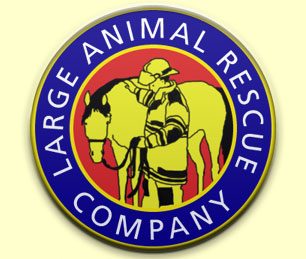In any Large Animal Rescue the basic premise is that these are big powerful animals. Ideally, rescuers can make use of that power and help them to help themselves.
In most rescues there are usually several different ways to assist the animal. How we assist that animal depends on the situation and the reactivity of the animal. Most of the risk in a LAR is linked to this reactivity. We are trying to assist a prey animal whose main concern is to stay alive and not be eaten. Generally, the animal is not in the thinking mode, but in the reaction mode with no consideration for the rescuer.
So above all, first, we keep rescuer safety as a priority.
Secondly, we choose a method that minimizes risk to the animal. Consider how to perform the simplest rescue possible. Is it easier to remove the horse from the obstacle or the obstacle from the horse? Sometimes simply altering the horse’s position may be enough for it to gain its footing. If the horse can’t make it uphill, maybe it can go downhill. It may be easier and safer to cut a trail than to lift a horse out. Can this horse be directed and supported with horse handling or does it need to be sedated and moved like an object? We must manage risk carefully in any animal rescue. Experience and training helps us to calculate operational risk and manage it. The horse handler on scene may be able to connect with the horse in a way that will help the patient to be more compliant. The veterinarian on scene contributes experience with physical and chemical restraint. If, attempts to minimize risk are not productive, and if the rescue is too dangerous to perform, then euthanasia must be considered. When doing a rescue, every rescuer gets a “round trip ticket”.
